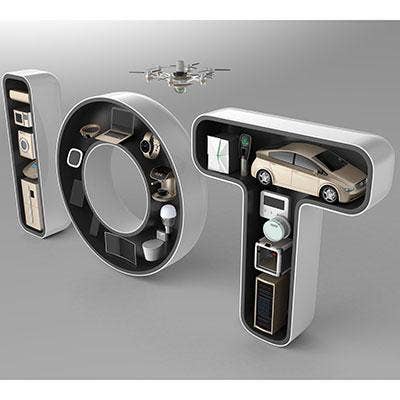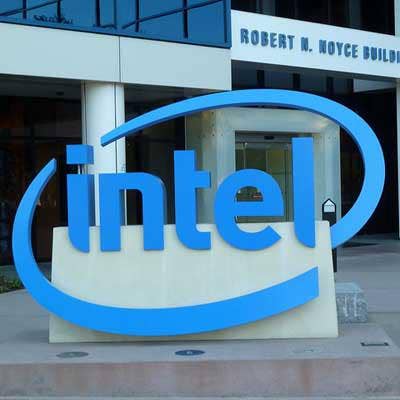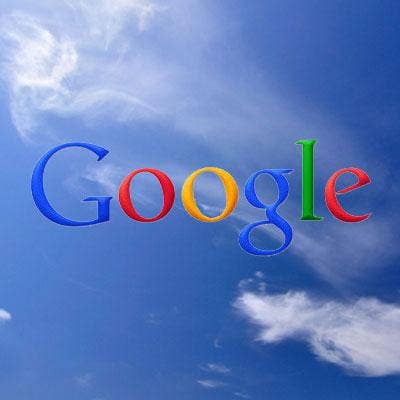Intel IoT VP Jonathan Ballon On The Critical Role Of Channel Partners In IoT, How Intel Is Changing The Game For Cloud Providers And New Distributor Initiatives

New IoT Initiatives
Intel has big plans for its Internet of Things business – and channel partners will play a critical part in that strategy.
Jonathan Ballon, Vice President, Internet of Things Group and General Manager of the Markets and Channels Acceleration Division, talked to CRN about how he sees channel partners – including resellers, Independent Software Vendors (ISVs), and system integrators (SIs) – as part of the chip giant's IoT initiatives.
"I've been in tech for almost 30 years, and the ecosystem has always been important, but I think there's no better time than now to be a professional working in technology channels," he said.
Following are excerpts from CRN's discussion with Ballon.

Do you see IoT driving change from a partner ecosystem point of view?
What we're seeing right now in the Internet of Things is it's not only one of the most exciting technology-enabled transformations … it will be as transformational if not more, from an economic point of view, than the industrial revolution. I think people are compelled by that, and they hear the stats around the growth and how much revenue potential it has.
But when you look at what's necessary to actually realize the vision of IoT, it is complex from an ecosystem point of view. I think what you're seeing now is that many companies that have been very good historically at building ecosystems and routes to market through a channel are finding that it requires a lot more integration than we've seen historically – it's not just like an enterprise IT software implementation, where two companies can partner together to deliver a functionality that gets delivered in an enterprise. We're seeing multiple parties coming together not just on the architecture and solutions, but also in terms of the go-to market, the implementation, and the ongoing support of those deployments.

What does this change mean for Intel's go-to-market channel strategies surrounding its IoT business?
For Intel, that means it's causing us to dramatically reform our strategy for how we go to market. Historically, this has been an embedded business for the last 20 years where companies other than PCs, phone and tablet manufacturers have been incorporating compute into their products, and our route to market for doing that has been through distribution and OEMs.
But now, it's not just about embedded compute, it also requires connectivity and software application functionality on top of that, and you need a broader set of ecosystem players that you align with.
In the simplest terms, we break it down into the get-to-market and the go-to-market. The get-to-market is how do you bring all the elements of the solutions together and package them in a way they can be easily consumed by a customer. And the go-to-market is how do you bring them out, sell them, and support them. For us, that means going way beyond the equipment manufacturers to include ISVs, traditional SIs and operational technology SIs, and cloud service providers – like Amazon Web Services, Microsoft Azure, or GE Predix.

You mentioned you are reaching out to operational technology (OT) SI partners as well as Intel's tradition IT global SI partners – talk about what operational technology partners can bring to the table.
I think a couple of years ago we assumed that this market would materialize similar to large-package implementation in enterprise IT, and if we went with partnerships with some of the traditional large global SIs, that would be a strong way to help build and deploy solutions to those IT think centers. But I think the reality that we've learned over the past few years is that it's really the OT players that are getting a lot more traction faster than those large global SIs, because they bring subject matter knowledge of that OT environment. That's where the buying centers are right now; IT is still supporting OT and industrial markets, where the OT players on the customer side are the ones that are driving the business and are making the decisions about how they want to instrument that business with technology. It's coming full circle, but I think what you'll see is this confluence of OT and IT coming together.

Do you see IT and OT partners working together, or butting heads in getting IoT solutions to market?
They're totally working together. When I think of the OT players, these are the folks that understand the implementation of the machines and the devices at the edge. If you're in oil and gas, these are the people work on the rigs or at the well. If you're mining, these are the people that are instrumenting technology in the mine or on the truck. They work with logistics players, and they're out in the field.
That's a totally different skill set than the IT players, working primarily in the enterprise, in the data center, and are taking a look at now that this data is coming in, what is our data architecture to support IoT.

How is Intel different than other companies in how it approaches the Internet of Things market?
There was a fallacy in the industry around the cloud and specifically that all of the value was going to migrate into the cloud. The edge and the devices on the edge would be dumb sources of data, and we're finding that that's not true, particular in industrial use cases.
There's lots of companies doing lots of press releases. You have to peel back what's going on in the press release and ask what's really going on here. Is this purely a go-to-market alliance where they will sell each other stuff and co-brand, or are they doing deep integration and hardening these solutions? Because I believe that's what's required in order to drive scale through developers and into the end customers. We want to make sure we're not measured by the number of announcements we're making, but rather by the hardened market-ready solutions that customers can put trust into and that are easy to implement.

How are partners helping Intel in deploying IoT solutions to customers?
The [level of customization partners bring to the table] is the name of the game right now. There are certain horizontal capabilities, but what's gaining traction in the market are those vertical-specific tested applications. Even if you take a category, like asset performance management, which is a really interesting category … how do you apply that in an aviation use case with the airlines versus in the utilities with power turbines? You need to understand the physics of those machines and how they're operating, so you can interpret the data coming off of them, for better informed predictive maintenance, better informed how to optimize utilization and uptime. I think the ISVs getting those vertical-specific functionality and capabilities are getting a lot of traction in my point of view.

Why should customers and partners choose Intel over its silicon competitors?
When you look at companies that have the ability to span an end-to-end architecture, with products, both hardware and software – from a silicon point of view, there is no one else who can do this except for Intel. We're seeing a tremendous amount of conversion of customers moving from competing architectures to Intel for that reason. They realize the total cost of ownership is optimized when you have an end to end architecture, and its more secure. That's the technical reason.
The business reason is that we're growing really fast above the market. Companies like ISVs, resellers and distributors want to be part of that. We've got a global reach, we enable them with a lot of content, program support, and matchmaking to them and other players, as well as customers – there's a tremendous amount of resources we have through our partner programs that are evolving and make it compelling for them to work with us.

How are margins for partners in the Internet of Things?
It depends on where you are in the value chain and the degree of value added capabilities you're putting on that. … the software at the application layer for the software portions of the solution, you're seeing the same kind of margins you'd see in any software business – licensing or as a service, the margins are generally high.
When you have some of the integration of these things, we're seeing new business models where companies are participating in revenue sharing agreements. As the market moves away from a capex-based consumption model to an opex-based consumption model, where people are paying for value as a service, you're seeing a lot of companies coming together and sharing that risk-reward through revenue share. It gives an opportunity for software like revenues – even if you are a hardware provider.

Talk about Intel's distributor partners. How are you working with them in the Internet of Things space?
Distributors have historically been hugely important. Almost everything flows through a distributor, if you're Intel. Even if you're selling to an end customer, someone in that supply chain will be purchasing products through distributors. Over 90 percent of our revenue at some point goes through a distributor today. Distributors are getting religion around IoT and are starting to build specific practices around IoT. In order to do that, they're realizing that instead of selling individual parts in a catalog, they have to start bundling things together into deployable market solutions. So what we've been doing and what we'll be doing more is packaging these together that are tested and easy to implement, and allow the distributors to take that to market – and allow them to move up the value chain, which I believe will have a material impact on their margins. The ones that do it will, it will be much harder to commoditize them, because they'll be bringing solution value instead of ingredient part value. We've been rolling this out this past year, and we have plans to do a lot more next year – because the results we've seen have been fantastic.

Last week, Intel announced a partnership with Google to integrate their respective software and hardware capabilities to better power container management, machine learning and Internet of Things workloads. Talk about what this means for the industry.
We announced a partnership to accelerate Google's cloud platform, and there's various aspects to that. Part of it is: How do we ensure that the workloads running in Google cloud are as sophisticated as possible, from a performance point of view? That includes bringing in a lot of capabilities for artificial intelligence, machine learning, computer vision and deep learning. We'll be helping Google to elevate a lot of those capabilities in the Google cloud platform. It also means we'll be optimizing things at the edge. You'll see a lot more of these types of things in the next few months where the extension of the functionality of a cloud service provider outside of a cloud and into some on-prem and device level integration. It will be accelerating, and you'll see a lot more of that. You're starting to see this distributed architecture from cloud to network to edge that plays into the strengths of Intel – what we announced with Google was one example of that, and I think you'll see more coming from the industry.